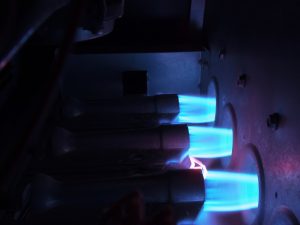Many homeowners would like to think that their HVAC systems will always run smoothly and efficiently for their entire lifespans. But like any piece of complex machinery, things can and do go wrong. Knowing which service calls can wait and which constitutes a true emergency are important distinctions.
Luckily, HVAC systems give off signs when something’s not right–most of the time. Let’s take a look at some scenarios that definitely warrant a timely response from a team of highly trained HVAC professionals. One thing is for sure: if you need HVAC emergency service in Covington, LA, contact us for fast and reliable service.
Cracked Heat Exchanger
Your furnace has an important component called the heat exchanger. In gas-powered furnaces, this metal container collects hot combustion gas from the burners. As they heat and cool, the heat exchanger’s metal chambers expand and contract. This strain can cause cracks to develop and if this happens, the toxic combustion gases could potentially enter the air being blown into the rooms.
Although you can’t visibly see the microscopic cracks in a heat exchanger, your furnace will give off other warning signs. A clicking noise will happen when the blower shuts off as the metal walls of the heat exchanger contract back into place. Visible signs of corrosion or a furnace that isn’t functioning are other clues.
The most obvious sign of a cracked heat exchanger is if your carbon monoxide detector is going off and you or any household members are experiencing signs of carbon monoxide poisoning. These can include headaches, lack of energy, flu-like symptoms, nausea, and vomiting. If this is occurring, turn off the furnace immediately and call emergency services.
Leaking Water
This may sound like an unusual scenario, but it’s not uncommon. A furnace or heat pump can develop leaks due to condensation. An HVAC system pulls moisture (condensate) out of the air as it heats your home. When everything is functioning as it should, this condensation is sent through a condensate drain line where it empties into a drain pan, and then empties out of your home.
When something goes wrong, it’s usually due to two possibilities: a clog in the drain line or a crack in the drain pan. Over time, the drainage pipe can become clogged with dust, debris, bugs, and mold. If the clog is severe, it water won’t be able to drain away fast enough, resulting in water overflowing into your home.
A cracked or damaged drain pan can’t collect condensation adequately. Made of metal, drain pans can develop rust and become brittle due to their constant exposure to moisture. When cracks develop, water can leak out from wherever the HVAC unit is located, resulting in water damage to the surrounding area.
In both scenarios, this potential water damage is what constitutes an emergency, especially when the water is moldy. Water damage is costly and difficult to irradicate. Routine maintenance is the key to preventing these scenarios from ever happening, but if you have water leaking, call us immediately for service.
We’re here to help with any HVAC emergencies you may encounter. When you need it done right, contact Professional Heating & Air.

